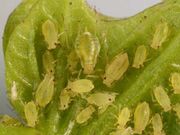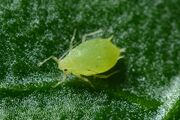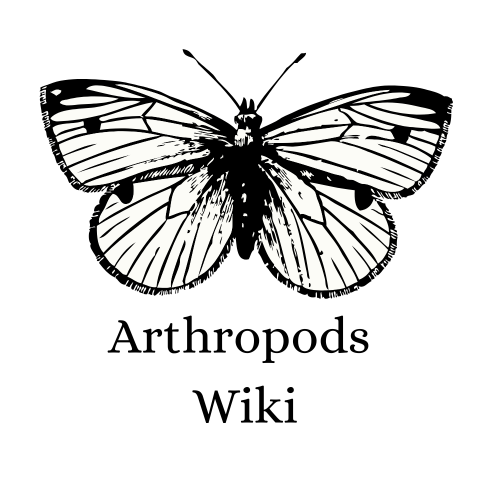No edit summary Tag: Visual edit |
No edit summary Tag: Visual edit |
||
| (5 intermediate revisions by 2 users not shown) | |||
| Line 1: | Line 1: | ||
| − | + | Aphids are small sap-sucking insects and members of the superfamily Aphidoidea. Common names include greenfly and blackfly, although |
|
| + | {{Infobox_100|title1=Aphidoidea|image1=Aphid 4.jpg|caption1=Greenfly|order=Hemiptera|phylum=Arthropoda|class=Insecta|family=Non Applicable}} |
||
| − | Class: '''''Insecta''''' |
||
| + | individuals within a species can vary widely in color. The group includes the fluffy white woolly aphids. |
||
| − | Order: '''''Hemiptera''''' |
||
| ⚫ | |||
| − | Phylum: '''''Arthropoda''''' |
||
| − | |||
| ⚫ | |||
== Signs == |
== Signs == |
||
| Line 23: | Line 21: | ||
=== Sign 4: === |
=== Sign 4: === |
||
| − | Honeydew on leaves and fruit, with black sooty mould fungus. |
+ | Honeydew on leaves and fruit, with black sooty mould fungus. |
| + | |||
| + | == Life cycle == |
||
| + | Most aphids in California's mild climate reproduce asexually throughout most or all of the year with adult females giving birth to live offspring—often '''as many as a dozen per day'''—without mating. Young aphids are called nymphs. They molt, shedding their skin about four times before becoming adults.[[File:Aphid 3.png|thumb]] |
||
| + | |||
| + | == Attracting aphids == |
||
| + | Plant flowers, such as '''marigolds, calendula, sunflower, daisy, alyssum''', or dill nearby to attract beneficial insects that love to feed on aphids. Ladybugs and lacewings are especially effective at devouring them. |
||
| + | |||
| + | == Lifespan == |
||
| + | '''''Approximately one month''''' - Each female produces hundreds of offspring over several generations. The average lifespan of an aphid is '''approximately one month'''. They reach sexual maturity in four to ten days and then are able to produce their own offspring. |
||
| + | [[Category:Hemiptera]] |
||
| + | [[Category:Homoptera]] |
||
Latest revision as of 14:57, 16 November 2021
Aphids are small sap-sucking insects and members of the superfamily Aphidoidea. Common names include greenfly and blackfly, although
individuals within a species can vary widely in color. The group includes the fluffy white woolly aphids.

Signs[]
Signs and symptoms of aphids include
Sign 1:[]
Colonies of aphids clustered on young stems, leaves and buds.
Sign 2:[]

Wilting and distortion of leaves and young shoots.
Sign 3:[]
Yellowing and premature death of leaves and young plants.
Sign 4:[]
Honeydew on leaves and fruit, with black sooty mould fungus.
Life cycle[]
Most aphids in California's mild climate reproduce asexually throughout most or all of the year with adult females giving birth to live offspring—often as many as a dozen per day—without mating. Young aphids are called nymphs. They molt, shedding their skin about four times before becoming adults.

Attracting aphids[]
Plant flowers, such as marigolds, calendula, sunflower, daisy, alyssum, or dill nearby to attract beneficial insects that love to feed on aphids. Ladybugs and lacewings are especially effective at devouring them.
Lifespan[]
Approximately one month - Each female produces hundreds of offspring over several generations. The average lifespan of an aphid is approximately one month. They reach sexual maturity in four to ten days and then are able to produce their own offspring.
